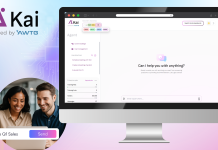The evolving relationship between citizens and local authorities creates challenges when managing digital transformation. Web Labs’ Garry Lander explains
Managing digital transformation at a directorate level has achieved good results, with specialist legacy software providing directorate specific solutions. Some enterprise software i.e. CMS for the corporate web site, CRM for customer services, electronic forms for online data capture and GIS for mapping have all made contributions to an enterprise wide solution.
The short-term plug and play solution of putting a web front end on every directorate legacy system and providing separate web portals for say planning, payments, benefits and housing, can often result in several web portals with different branding, disjointed customer journeys, and a multitude of different log ins, where no consideration is given towards personalisation.
Digital transformation at the directorate level fails to address many age-old problems. Directorates can be left vulnerable to small pockets of expertise leading to challenging continuity issues. Reduction of duplicated administration tasks is essentially impossible. Cross channel communications can be complex and labour intensive. The majority of directorates require dedicated resourcing and attempts to share those resources can be challenging.
Around the clock communication
The relationship between the citizen and the local authority has changed in the light of technology and social changes. The customer now expects to communicate with their local authority via multiple channels 24/7 as they would with any other organisation. In addition, they expect a high level of service and personalisation whether they are communicating via telephone, web site, social media, or in person.
All Portals require a degree of administration, much of the administration function is replicated from one directorate to another but when dealing with legacy and disparate platforms, reducing replicated functionality can be daunting. Attempting cross channel fertilisation can lead to an almost bewildering and quite often costly reliance on API/connector development.
A philosophy for change
Digital transformation at directorate level can only take an organisation so far where more and more resource has to be allocated for increasingly incremental returns, (the law of diminishing returns).
In today’s customer service society this is just not good enough and can only make peripheral contributions towards a cohesive, enterprise wide, digital by default strategy that can be planned and implemented over the next half a decade, leading to single sign on, one citizen portal/website, as well as a reduction in cost of administration and improved and personalised customer centric service.
At director level a portal or directorate management philosophy has to be replaced with an enterprise management philosophy, a utopian view of enterprise management would be 2020 vision across all directorates, shared administration and resources, straight through to the processing of citizen, authority, and contractor communications.
Controlled access to all portals from a single point and shared administration across all directorates. When enterprise vision has become enterprise reality then development can start to focus on break out developments and multi enterprise or cross enterprise solutions such as health and social care, local government and local SME relationships. Budgets that were previously employed for incremental improvements in directorate performance can now be re-allocated to multi-enterprise programmes and potentially initiatives that add value.
The London Borough of Southwark
The London Borough of Southwark has come a long way over the recent years, replacing brochure web sites with fully transactional and responsive web portals. Unnecessary administration effort between the client and the back office legacy systems and all of re-keying of data between systems is being replaced by utilising an integration engine within the Web Labs Digital Transformation Platform (The Bridge).
The London Borough of Southwark now has 175,000 registered users, who signed up out of a potential population of 288,000, as well as new registrations that are accruing at a rate of 3,000 per month. There are 80,000 online Revs and Bens transactions per year and landlords licensing revenue has seen revenue increases of £110,000 in the first 6 months.
The success of the LB Southwark citizens portal has led to an approach by the NHS (Southwark Clinical Commissioning Group) to incorporate their online services into the MySouthwark portal so that citizens, besides locating NHS services and accessing health advice will be able to register with a GP, book and manage their appointments via the local government portal.
At Southwark much of the directorate thinking and planning has been replaced with an enterprise solution approach which utilises re-usable code, shared administration and a dramatic reduction of task replication.
Web-Labs “The Bridge” is an enterprise hub and is a complete “development environment” where one intuitive GUI user interface integrates CMS, EDRMS, e-Forms, e-Democracy and customer self-service systems under one umbrella. The Bridge’s powerful integration engine simplifies connectivity to back office and legacy systems enabling a single portal into council’s online services and information which is tailored around residents, businesses, and service user’s specific needs and requirements.
Garry Lander
Web Labs
garry@web-labs.co.uk
Please note: this is a commercial profile











